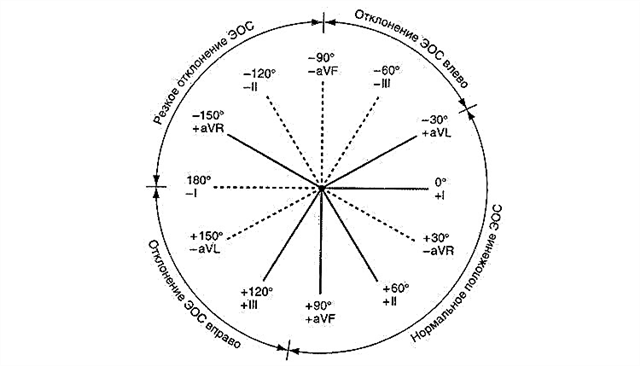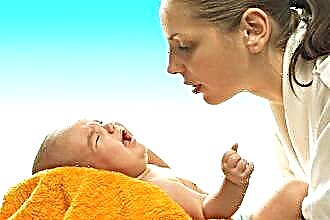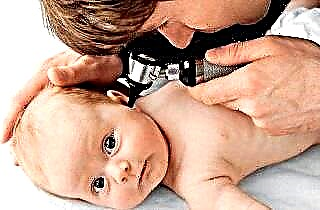Sputum is a physiological fluid that is produced by the tracheobronchial tree. It performs a protective function, preventing the penetration of pathogenic agents into the mucous membranes of the respiratory system.
 However, accumulating phlegm in a child's throat signals that the goblet cells, which produce mucus in the airways, are overactive.
However, accumulating phlegm in a child's throat signals that the goblet cells, which produce mucus in the airways, are overactive.
Excessive production of viscous secretion is not an independent disease, but a symptom that indicates the development of septic inflammation. Treatment begins with finding out the causes of the problem. The provocateurs of pathological reactions are often pathogenic microbes or viruses. Expectorants can reduce the viscosity and facilitate the passage of sputum from the lower and upper airways.
What is phlegm?
In the absence of inflammatory reactions in the respiratory organs, about 100 ml of mucus is formed daily. It contains a large number of macrophages and granulocytes, which protect the respiratory tract from the penetration of pathogenic flora. In the case of the development of an infectious disease, the performance of the ciliated epithelium is disrupted, as a result of which mucus begins to accumulate in the child's throat.
The formation of lesions in the pharynx stimulates the activity of the goblet cells, which begin to produce an excess amount of viscous secretion. It contains proteins and monosaccharides, which are a suitable substrate for the propagation of pathogenic agents. Untimely mucus removal leads to impaired drainage function of the lungs, which entails the development of complications - bronchitis, pneumonia, COPD, etc.
Etiology
Children more often than adults suffer from respiratory diseases, since their immune system is not able to withstand most disease-causing viruses and microbes. The lack of adaptive immunity increases the risk of developing infectious pathologies, entailing the accumulation of mucus in the bronchi, trachea and pharynx. The formation of excess mucus in the airways is often associated with the development of diseases such as:
- flu;
- pharyngitis;
- bronchitis;
- tracheitis;
- bronchial asthma;
- tracheobronchitis;
- laryngitis;
- rhinorrhea;
- tonsillopharyngitis.

Children under 2 years of age are not able to effectively cough up sputum, therefore, the accumulation of mucus in the bronchi often leads to the development of obstructive syndrome.
It is worth noting that expectorant drugs only facilitate the course of the disease. To accelerate the regression of pathological reactions in the respiratory organs, antimicrobial and antiviral agents must be taken in parallel.
When to see a pediatrician?
It is difficult to diagnose ENT pathologies in patients under the age of 1.5 years, since an infant is not able to independently inform parents about the presence of discomfort in the pharynx. In addition, coughing does not always occur when there is excess production of viscous mucus, which is localized between the throat and the nasal cavity. It is possible to suspect the development of a respiratory disease in a child by the appearance of the following pathological symptoms:
- capriciousness;
- refusal to eat;
- wheezing in the lungs;
- poor sleep;
- labored breathing;
- runny nose.
Children from 2 years of age may complain of a burning sensation in the throat, headaches, myalgia and painful swallowing of saliva. If the above symptoms appear, the child's oropharynx should be examined. The presence of hypertrophy of the tonsils and redness of the mucous throat indicates the development of inflammatory reactions in the tissues. For a more accurate diagnosis and determination of the treatment regimen, you need to seek help from a pediatrician.
Treatment features
The discharge of viscous mucus in children is much more difficult than in adults. The underdevelopment of smooth muscles interferes with the normal evacuation of sputum during a coughing act. It is worth noting that the mucus accumulating in the pharynx in children has a denser consistency, which makes it difficult to detach from the walls of the respiratory tract. Therefore, to facilitate the patient's well-being, it is necessary to use agents that thin the mucus and promote its discharge from the tracheobronchial tree and throat.
Important! Congestive processes in the lungs associated with the accumulation of phlegm in the bronchi increase the risk of chronic inflammatory reactions.
Drug treatment involves the use of secretolytic (mucolytic) and secretomotor (expectorant) action. In this case, the therapy regimen should be determined only by the attending physician. It is undesirable for children under 2 years old to give expectorants, as they increase the production of mucous masses, which the child is not able to cough up effectively.
During treatment, several important rules must be observed to speed up the child's recovery process:
- humidification of the air in the room - reduces the viscosity of mucus in the throat, which contributes to its evacuation;
- drinking plenty of fluids - reduces the elasticity of sputum, thereby facilitating the process of its detachment from the walls of the respiratory tract;
- regular cleaning in the children's room - elimination of allergens (dust, animal hair) prevents allergic reactions and swelling of the ENT organs.
Daily walks in the air have a beneficial effect on metabolic processes in tissues and prevent stagnant processes in the lungs. Moderate physical activity allows you to translate a dry cough into a productive cough, which speeds up the healing process.
Expectorants
 Expectorant medicines - a group of medicines that ensure the abstraction of pathological secretions from the airways. Medicines reduce the viscosity of mucus and stimulate the activity of the ciliated epithelium, which speeds up the process of its elimination from the lungs and throat. Depending on the principle of action of medications, the following types of expectorant drugs are poured:
Expectorant medicines - a group of medicines that ensure the abstraction of pathological secretions from the airways. Medicines reduce the viscosity of mucus and stimulate the activity of the ciliated epithelium, which speeds up the process of its elimination from the lungs and throat. Depending on the principle of action of medications, the following types of expectorant drugs are poured:
- secretomotor - stimulate the activity of cough centers, which accelerates the evacuation of sputum from the airways;
- mucolytic - reduce the density and elasticity of the pathological secretion, which facilitates the process of its discharge from the walls of the ENT organs.
Important! Expectorants are undesirable to use when undergoing antibiotic therapy, since they reduce the absorption of antibiotics in the throat tissue.
Medicines of mucolytic and secretolytic action are produced in the form of suspensions, syrups, pills, solutions for inhalation and rinsing the oropharynx. For the treatment of patients under 2 years of age, it is more advisable to use syrups and suspensions of plant origin. However, some components of the drugs can cause an allergic reaction in a child, so it is advisable to consult a doctor before using medication.
Mucolytic drugs
Mucolytics are secretolytic drugs that reduce the viscosity of difficult-to-separate sputum, thereby accelerating the process of their excretion from the ENT organs. Unlike expectorants, they do not increase the volume of mucus in the bronchi, which prevents the occurrence of stagnant processes. Mucolytic drugs are used to convert dry cough into productive cough in children of any age group.
Secretolytic agents are used in the treatment of pathologies of the lower airways - pneumonia, bronchitis, laryngotracheitis, etc. The following types of medications are usually included in the conservative treatment regimen:
- "ACC 100";
- Bromhexine;
- Ambrobene;
- Rinofluimucil;
- Gelomirtol.
Do not use mucolytics together with antitussive medicines, as this will lead to stagnation of mucus in the lungs.
Secretomotor drugs
Expectorant drugs are drugs that increase the volume of mucus produced by the tracheobronchial tree, thereby decreasing its elasticity. Medicines of this group stimulate the activity of the ciliated epithelium, as a result of which the process of abstraction of pathological secretions from the pulmonary tract is accelerated. In most cases, secretomotor drugs are represented by herbal products, which include thyme, coltsfoot, ivy, marshmallow, licorice root, etc.
Medicines with secretomotor action are used to treat acute and sluggish inflammatory reactions in the ENT organs, accompanied by a dry cough. For the treatment of children can be used:
- "Gedelix";
- "Pertussin";
- "Doctor IOM";
- "Liquorice root";
- Broncatar.
It should be understood that treatment with expectorant drugs should be combined with the passage of etiotropic or pathogenetic therapy. Symptomatic drugs improve the patient's quality of life, but do not eliminate the cause of the pathology.
Inhalation
 Sputum without coughing in a child's throat most often indicates the presence of inflammatory reactions in the nasopharynx. Mucus that collects between the throat and nasal cavity makes it difficult for the baby to breathe. Sputum can be eliminated by inhalation with a nebulizer, which not only reduce the viscosity of the pathological secretion, but also eliminate catarrhal processes in the lesions.
Sputum without coughing in a child's throat most often indicates the presence of inflammatory reactions in the nasopharynx. Mucus that collects between the throat and nasal cavity makes it difficult for the baby to breathe. Sputum can be eliminated by inhalation with a nebulizer, which not only reduce the viscosity of the pathological secretion, but also eliminate catarrhal processes in the lesions.
A nebulizer is a compact device with a special chamber into which a medicinal solution is poured. The medical device converts liquid into an aerosol at room temperature, so it can be used to treat children from the first days of life. In addition, nebulizers do not destroy the active components of medicines, which greatly increases the effectiveness of the procedure.
To liquefy a viscous secretion and eliminate pathological reactions in the mucous membranes of the airways, the following can be used:
- "Lazolvan" - stimulates the secretion of phlegm, but reduces its elasticity, as a result of which it facilitates its discharge from the walls of the pharynx;
- "Bronhosan" - destroys mucopolysaccharides in mucus, due to which its viscosity decreases and the process of evacuation from the bronchi is facilitated;
- "Ambrobene" - stimulates the work of serous cells in the ciliated epithelium, due to which the production of mucus increases, but its density decreases;
- "Eucabal balsam C" - breaks down bronchial secretions, which facilitates the work of the ciliated epithelium, evacuating mucus from the respiratory tract;
- "Ambrohexal" - stimulates the activity of the ciliated epithelium, which accelerates the process of removing phlegm from the respiratory system.
Inhalation should be done daily at least 4 times a day for 5-7 minutes.
The effectiveness of physiotherapy is determined by the regularity of inhalation procedures. To clear the lungs, bronchi, trachea and throat from pathological secretions, therapeutic manipulations must be carried out for 7-10 days.



